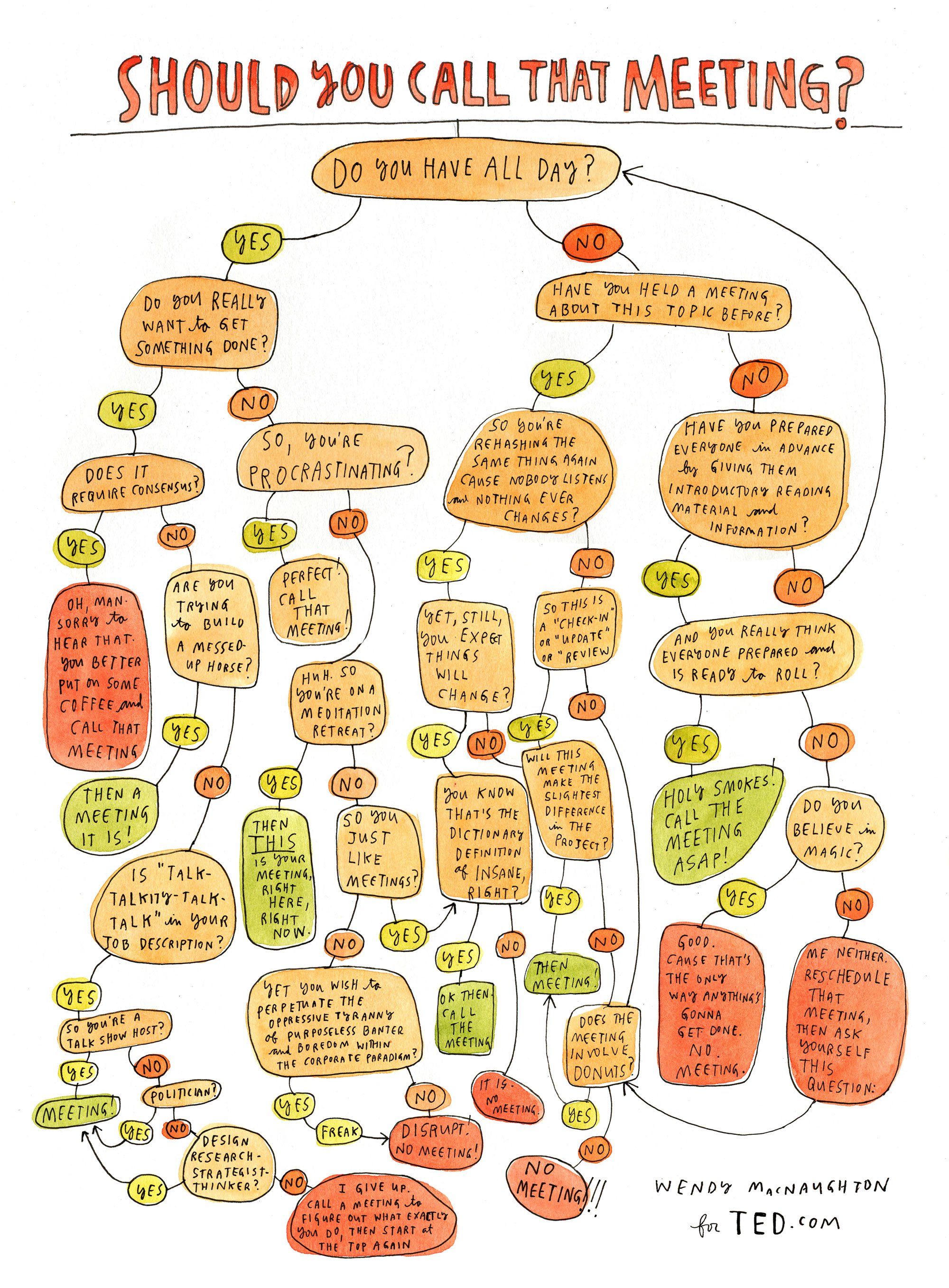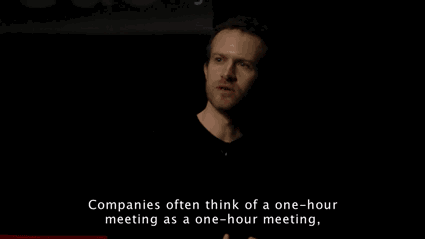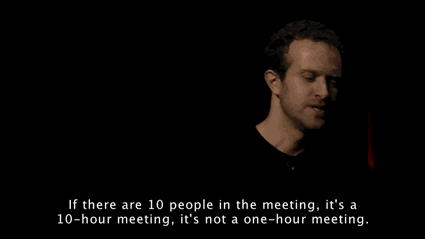When great minds meet, everybody benefits. So, when meetings are good, they’re great. But if they’re bad (as most office meetings are, be honest with yourself), they’re anything but beneficial. You may say to yourself, or quietly argue to this article during your sad desk lunch: “But I am doing work. I’m sitting and talking and brainstorming about work, thus I am working.” Yeah, not really.
As Jason Fried (TED Talk: Why work doesn’t happen at work) points out, “Meetings aren’t work. Meetings are places to go to talk about things you’re supposed to be doing later.”
Or, if you’re not in-person, there’s the hands-free and nightmarish conference call.
Since we can’t escape meetings entirely, how do we stop them from sucking up everyone’s time and space like the work equivalent of a black hole?
Step 1: Ask yourself a simple question. “Does this [thing] really need a meeting?”
If you’re having a hard time answering that question, here’s a handy infographic that should help you get to the bottom of one of work-life’s most sustaining and existential questions.
Other questions to think about:
- “Will this meeting make the slightest difference in the project?”
- “Does this involve donuts?”
- “How much money is this meeting wasting?”
- “Do you believe in magic?”

Step 2: If a meeting is unavoidable — how do you minimize the inevitable dread for all involved?
“[There’s] this fundamental belief that we are powerless to do anything other than go to meetings and suffer through these poorly run meetings and live to meet another day,” says David Grady.
Which, generally, sounds like a special circle of hell that it needn’t be.
In his talk, Grady outlines a few ways to lessen the blunt force trauma to the head that a poorly run, unproductive meeting can feel like. Behold, a 3-point checklist.
- Do you really need to be there? The answer is maybe, maybe not. Imagine this scenario: A meeting invitation pops up in your calendar. And it’s from this woman who you kind of know from down the hall, and the subject line references some project that you heard a little bit about. But there’s no agenda. There’s no information about why you were invited to the meeting. And yet you accept the meeting invitation, and you go. And when this highly unproductive session is over, you go back to your desk, and you stand at your desk and you say, “Boy, I wish I had those two hours back.”
- Will an email suffice? Yes yes, the one thing people may despise more than meetings are emails. TED Curator Chris Anderson even has an entire website dedicated to saving our inboxes from the ever-rising flood of emails that haunt most professionals’ waking hours. However, there are few sweeter victories than avoiding half-hour meetings with a few focused clacks of the keyboard, or even a 5-minute desk / kitchen / watercooler chat (if it’s painless for all parties involved, that is; don’t stalk your co-workers, please).
- Does the meeting have an agenda? It’s important to have an outline that keeps everyone on task and ensures that all points that need discussing are covered. If you’re not the meeting creator and you don’t see an agenda, reach out to the person heading it and request bulletpoints on what will be reviewed.
“Tell them you’re very excited to support their work, ask them what the goal of the meeting is, and tell them you’re interested in learning how you can help them achieve their goal,” Grady advises.
Agendas are great touchpoints to have if this is a new topic, a project that’s being dusted off, or if it’s the seven-millionth meeting about this one thing and you need some guiding words to navigate this nebulous and redundant path to success. Who knows — in asking for this information often and respectfully, people may be a little more thoughtful and actually include agendas by default in the future.
(Best-case scenario, the person realizes after writing up the agenda that there’s no point in meeting and cancels the meeting. Hooray!)
Step 3: Third meeting in a row? Consider moving outside the conference room. (If the meeting is small, that is.)
Cabin fever sets in probably around Meeting Three (that’s just a guesstimate). And if the meetings don’t kill you, the sitting most likely will, says this TED-Ed lesson:
So, if the option is available to you, take your meeting outside. Suggest a walking meeting prior to your small one-on-one or even get some headphones (preferably with a microphone) and take the call on an outdoor excursion around the block.
A little exercise and fresh air does wonders for your mind, health and productivity — and may even improve creativity, a Stanford study finds. You’d also be among some famous company.
All snark aside, meetings are useful when done well. But with great power over other peoples’ time and productivity, comes great responsibility.

